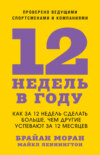Объем 28 страниц
United Nations Convention on the Rights of the Child

О книге
The «United Nations Convention on the Rights of the Child» serves as a landmark document that enshrines the rights of children globally, articulating their entitlements to protection, education, and participation. This convention reflects a shift towards recognizing children not merely as passive recipients of care but as active agents with rights that must be respected and upheld. The text adopts a formal yet accessible literary style, interspersed with legal jargon while remaining comprehensible, thus emphasizing the urgent need for global recognition of children's particular vulnerabilities. Within the broader context of international law, it signifies a pivotal moment in promoting human rights, echoing developments in humanitarian discourse following World War II and civil rights movements worldwide. The United Nations, an international organization established in 1945, symbolizes the collective effort of nations to promote peace, security, and development. The Convention was adopted in 1989, influenced by decades of advocacy, emerging research on child development, and growing awareness of children's issues across diverse societies. This culmination of ideas reflects a comprehensive understanding of the socio-political landscapes shaping children's rights, drawing from various cultural perspectives and legal frameworks. This seminal work is essential reading for scholars, policymakers, and advocates working within the realm of childhood rights. It not only provides a historical overview of children's rights but also serves as a foundational text for improving social policies and legislation aimed at protecting children globally. Engaging with this convention equips readers with the necessary insights to champion children's rights effectively.











